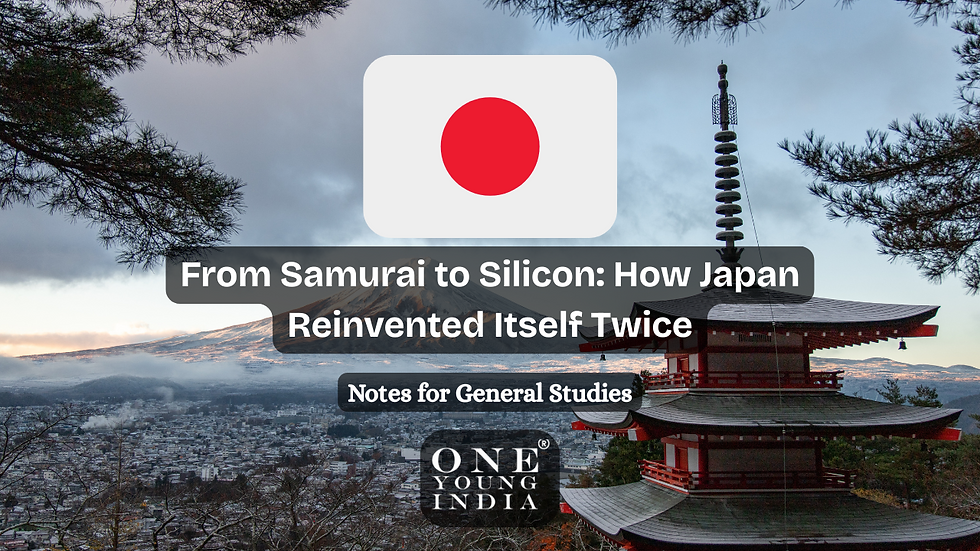Boston Tea Party
- One Young India

- Feb 24, 2023
- 4 min read

The Boston Tea Party is a pivotal event in American history that took place in Boston Harbor on December 16, 1773. It is also known as the "Boston Massacre." It was a political protest against the Tea Act, which was enacted by the British Parliament and mandated that taxes be placed on tea that was brought into the American colonies by the British East India Company. The event is regarded as a significant turning point in the course of the American Revolution and the struggle for independence from British rule in the United States.
Why did the Boston Massacre Take Place?
The relationship between the government of Great Britain and the people of the American colonies had been growing increasingly tense in the years leading up to the Boston Tea Party. The colonists were dissatisfied with the policies of the British government regarding taxation, as well as the fact that they were not represented in the British Parliament. A significant number of colonists regarded the Tea Act, which was enacted by the British Parliament in 1773, as yet another illustration of British oppression and a violation of their rights.
Bypassing colonial merchants who had been selling Dutch tea that had been smuggled into the colonies, the Tea Act authorised the British East India Company to sell tea directly to the colonies. This allowed the company to cut out the middleman. This made it possible for the British East India Company to sell tea at a price that was lower than what the colonists were accustomed to paying, but it also gave the company a monopoly on the tea trade, which angered the colonial merchants who stood to lose business as a result of the monopoly.
On the night of December 16, 1773, a group of colonists known as the Sons of Liberty, led by Samuel Adams, boarded three British ships in Boston Harbor. These ships were the Dartmouth, the Eleanor, and the Beaver. Samuel Adams was the leader of this group. The colonists, who were pretending to be Native Americans, threw 342 chests of tea into the harbour, which resulted in the loss of the tea and a significant loss of financial value.
Aftermath of Boston Tea Party
Following the events of the Boston Tea Party, the British government took severe action, including the enactment of the Coercive Acts, which were designed to inflict punishment on the colonists and strengthen British authority. These actions further exacerbated the tensions that already existed between the British government and the American colonists, which ultimately played a role in the beginning of the American Revolution.
The Boston Tea Party is an important event in the history of the United States because it served as evidence that the colonists were willing to resist the authority of the British government and were dedicated to the cause of American independence. The event was widely reported in the colonies as well as in Britain, and it helped to galvanise support for the American Revolution among colonists who had previously been hesitant to take up arms against the British. This was a significant factor in the eventual success of the American Revolution.
Today, the Boston Tea Party is remembered as a symbol of resistance against tyranny and oppression in the United States. It is commemorated annually on December 16 in Boston and other cities and towns across the United States by holding reenactments, parades, and other events in those locations. A potent and lasting reminder of the significance of individual rights, political representation, and the struggle for freedom and democracy is provided by the Boston Tea Party.
Facts about Boston Tea Party
One of the most well-known historical occurrences in the United States was the Boston Tea Party, yet many people might not be aware of all the details. The following information regarding the Boston Tea Party is not well known:
The Harbor's Tea Spill was Valuable
Even by today's standards, the tea that was thrown into Boston Harbor during the Boston Tea Party was expensive. The 342 chests of tea that were thrown into the water were worth almost $1.7 million in today's money.
The Boston Tea Party Participants Disguised as Native Americans
Contrary to common opinion, the Boston Tea Party participants did not dress like Indians; rather, they wore attire that looked like Native American clothes. In order to conceal themselves and avoid being recognised, the participants painted their faces and wore feathers.
There Have Been More Tea Parties Outside Boston
The Boston Tea Party is the most well-known of the colonial American tea parties. There were, however, a number of other tea parties that took place in various other locations, such as Charleston, Annapolis, and New York.
Nobody is aware of the precise location where the tea was thrown out.
It is unknown exactly where the tea was thrown into Boston Harbor during the Boston Tea Party. There are a number of potential sites, but it's not obvious whether one is the actual scene of the incident.
Due to the Boston Tea Party, the British Parliament passed a number of harsh laws.
To punish the colonists for their activities following the Boston Tea Party, the British Parliament enacted a number of measures known as the Coercive Acts. These ordinances mandated the closure of Boston Harbor, the accommodation of soldiers in private residences, and the suspension of the charter of Massachusetts.
Only a handful of the lesser-known facts regarding the Boston Tea Party include those listed above. Although being a well-known historical event, there is still a lot to discover about this crucial turning point in the struggle for American freedom.



